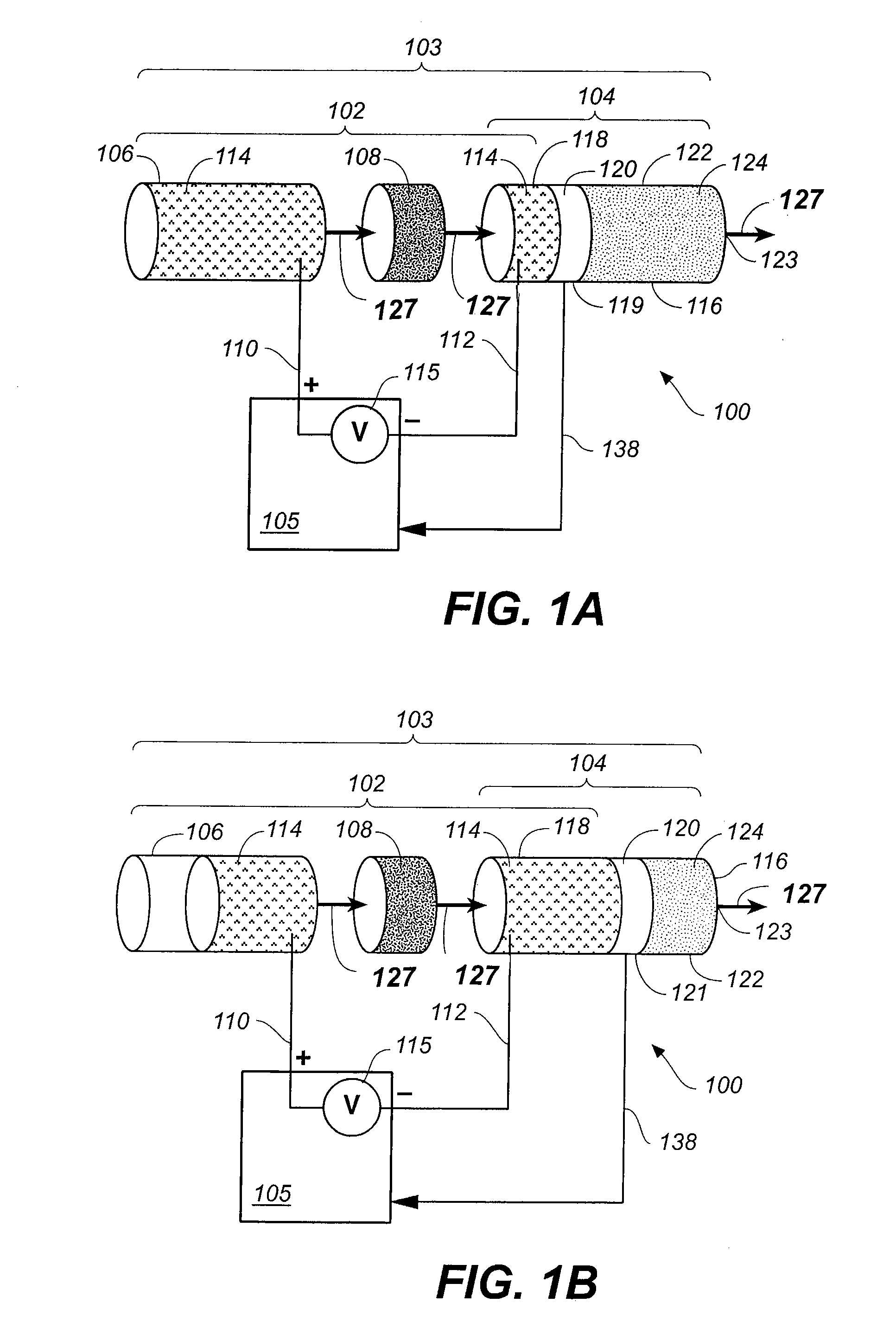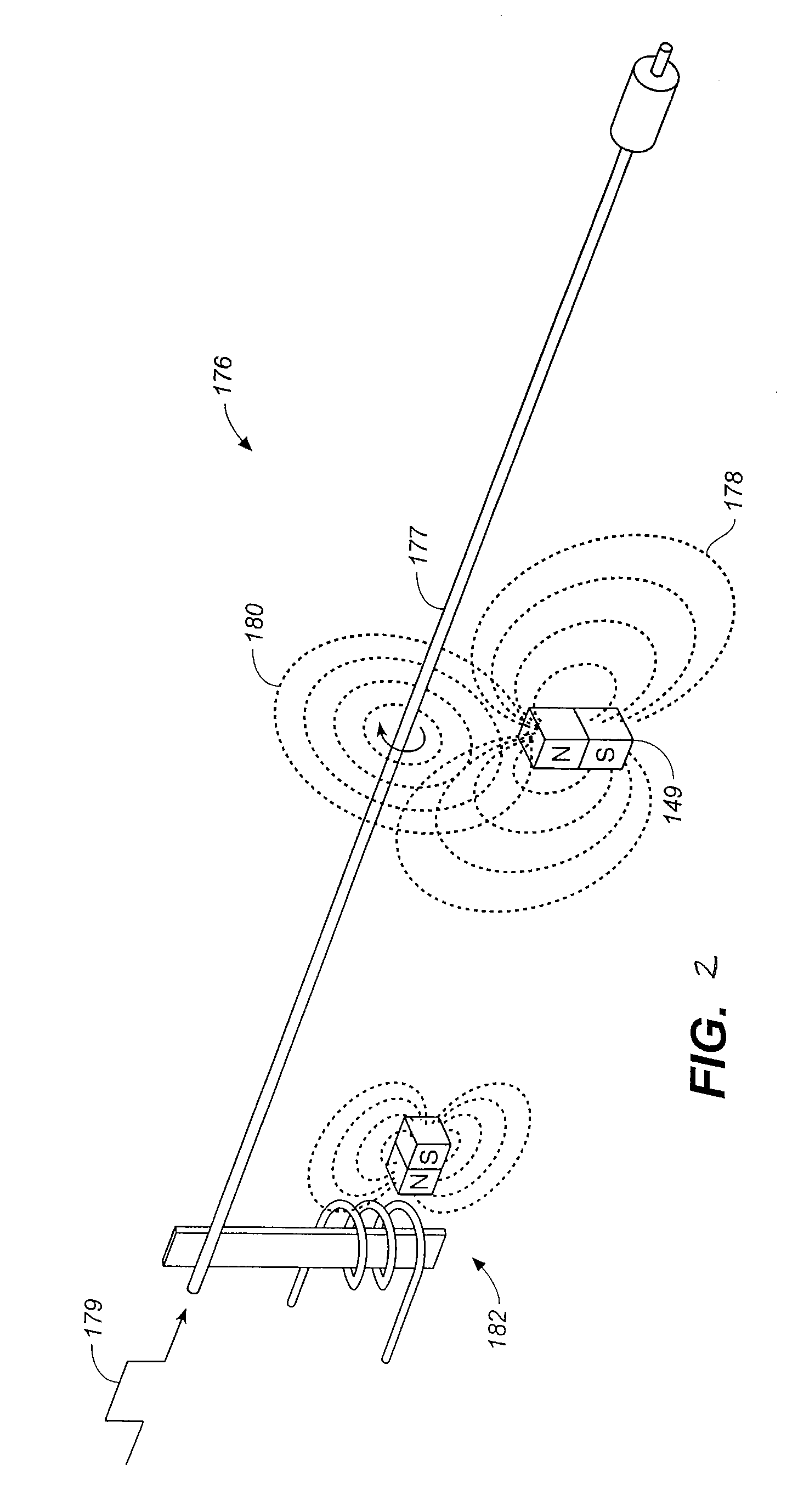Malfunction detection in infusion pumps
a technology of infusion pump and malfunction, which is applied in the direction of instruments, liquid/fluent solid measurement, and mechanical means, etc., can solve the problems of difficult to distinguish occlusion from normal frictional variation, difficult to diagnose failure modes using electro-mechanical sensors, and complex devices with many components
- Summary
- Abstract
- Description
- Claims
- Application Information
AI Technical Summary
Problems solved by technology
Method used
Image
Examples
example 1
Basal and Bolus Liquid Delivery
[0167]Using an electrokinetic infusion pump with closed loop control 100 as illustrated in FIG. 6, basal and bolus infusion liquid delivery rates were determined. In basal infusion, small volumes are dispensed as a series of shots. In bolus infusion, large volumes are dispensed in a single shot of longer duration. Basal and bolus infusion liquid delivery rates were determined by applying voltage to electrokinetic engine 102 for a period of time (referred to as the pump on time), then switching the voltage off for a period of time (referred to as the pump off time). The sum of pump on time and pump off time is referred to as cycle time in this example. The mass of infusion liquid pumped during each cycle time (referred to as the shot size) was determined with a Mettler Toledo AX205 electronic balance. The shot size was determined repeatedly, using the same pump on time and the same cycle time, giving an indication of shot size repeatability. Using the d...
example 2
Occlusion Detection with Closed Loop Control
[0172]FIG. 13 is a flow diagram illustrating a method of detecting occlusions in an electrokinetic infusion pump with closed loop control 100 according to an embodiment of the present invention. With reference to FIG. 13, and FIGS. 1A & 1B, closed loop controller 105 starts with a normal status 246. In the next step, closed loop controller 105 determines position 250 of moveable partition 120. After determining the position 250 of moveable partition 120, closed loop controller 105 waits before dose 252. During this time, the pressure in electrokinetic infusion pump 103 decreases. After waiting before dose 252, a fixed volume is dosed 254. This is accomplished by activating the electrokinetic engine 102. As a result of dosing a fixed volume 254 (electrokinetic engine on time), the pressure in electrokinetic infusion pump 103 increases as a function of time, as illustrated in FIG. 14. Multiple graphs are illustrated in FIG. 14, showing the e...
example 3
Measurements of Streaming Potential to Detect Occlusions
[0173]Experiments were conducted in which the streaming potential was measured as a function of pressure difference across a porous membrane (Durapore Z, Millipore Corp., Billerica, Mass.), such as those used in fabricating electrokinetic porous media. FIG. 16 is an illustration of the correlation between pressure difference across electrokinetic porous media and streaming potential, as measured in the experiment.
[0174]As illustrated in FIG. 16, the streaming potential is around 3 mV per psi pressure difference, and is consistent with the streaming potential predicted by the Helmholtz-Schmoluchowsky equation. In operating an electrokinetic infusion pump, typical pressures in the electrokinetic solution receiving chamber are on the order of 10 psi. When an occlusion is present, the pressure in electrokinetic solution receiving chamber 118 can increase to about 20 psi. At pressures of 20 psi in the electrokinetic solution receivi...
PUM
 Login to View More
Login to View More Abstract
Description
Claims
Application Information
 Login to View More
Login to View More - R&D
- Intellectual Property
- Life Sciences
- Materials
- Tech Scout
- Unparalleled Data Quality
- Higher Quality Content
- 60% Fewer Hallucinations
Browse by: Latest US Patents, China's latest patents, Technical Efficacy Thesaurus, Application Domain, Technology Topic, Popular Technical Reports.
© 2025 PatSnap. All rights reserved.Legal|Privacy policy|Modern Slavery Act Transparency Statement|Sitemap|About US| Contact US: help@patsnap.com



